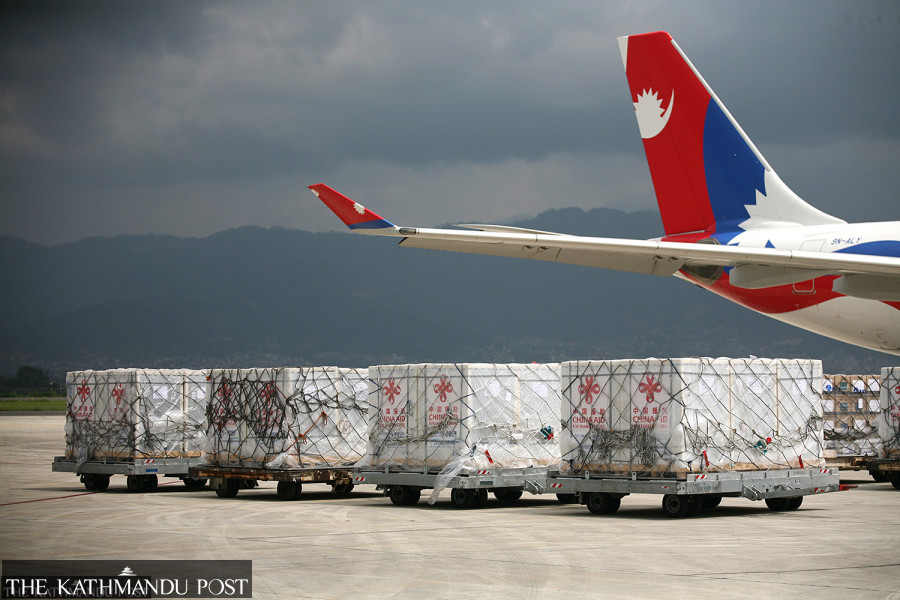Health
Vero Cell doses bought through COVAX will arrive from November
Government rolling out 800,000 Vero Cell doses this month to jab the unvaccinated population.
Arjun Poudel
Vero Cell vaccine doses bought from the COVAX facility through a cost-sharing mechanism are likely to be delivered starting November.
Officials at the Ministry of Health and Population said they have been waiting for the supply schedule of the vaccine.
“The government has already made the payment for 5.9 million doses of the Vero Cell vaccine, which is being purchased through the COVAX facility’s cost-sharing scheme,” Sagar Dahal, chief of the National Immunisation Programme, told the Post. “We expect to get the vaccine delivery starting in November.”
COVAX, the UN-backed international vaccine-sharing scheme, has committed to providing Nepal 13 million doses of Covid-19 vaccines, which will be sufficient to inoculate 20 percent of the total population.
Apart from this, the facility is also assisting the countries including Nepal to purchase the vaccine through a cost-sharing mechanism, which means the government will pay COVAX the amount equivalent to what COVAX pays to vaccine manufacturers.
“We have been expecting to get supply from COVAX soon,” said Dr Roshan Pokhrel, secretary at the Ministry of Health and Population. “Our vaccination programme will be continued and we will get the vaccine from COVAX before we run out of doses.”
Along with the Vero Cell vaccine, the government has also made the payment for 4 million doses of the Moderna vaccine, which is also being purchased under COVAX’s cost-sharing mechanism.
Moderna vaccine, which is to be administered to children above 12 years is expected to be delivered from February next year.
Nepal has already purchased 10 million doses of Vero Cell or BBIBP-CorV vaccine developed by the Chinese state-affiliated pharmaceutical giant Sinopharm.
Of them, 4 million doses of the vaccine were purchased in June under a non-disclosure agreement with the Chinese company and an additional 6 million doses were purchased in August.
All the vaccines the government purchased have already been delivered.
Along with this, China had also provided 1.9 million doses of Vero Cell under grant assistance. The northern neighbour has also committed to provide an additional 1.6 million doses in grants possibly within October.
“We have decided to roll out an additional 800,000 doses of Vero Cell vaccine to provide the first dose for the unvaccinated population,” Upendra Dhungana, chief of the Logistic Management Section under the Department of Health Services, told the Post. “We have decided to roll out additional doses to be used in the first dose, as we got assurance that the grant doses will be delivered within October.”
China has also offered to provide 1 million doses of the Sinovac-CoronaVac Covid-19 vaccine to Nepal. This vaccine is developed by the Beijing-based Sinovac Life Sciences Co Ltd.
When delivered, it will be the second type of Covid-19 vaccine manufactured in China to be used in Nepal after Vero Cell. So far Sinopharm, China’s state-affiliated pharmaceutical giant, has supplied 11.9 million doses of the Vero Cell vaccine to Nepal.
Nepal started its vaccination drive with the 1 million doses of Covishield, the AstraZeneca type vaccine, which the Indian government had supplied under a grant assistance. India had supplied an additional 100,000 doses of Covishield under a grant to the Nepal Army. Besides, Nepal received 1 million of the 2 million doses of Covishield for which the government had paid.
The remaining 1 million doses are yet to be supplied, but government officials say India is most likely to provide the doses within a week.
Nepal received 348,000 doses of Covishield from COVAX in March.
Bhutan and Japan have provided 230,000 and 1.614,740 doses, respectively, of the AstraZeneca vaccine. The United States has supplied 1,534,850 doses of the single-shot Janssen vaccine and the United Kingdom has supplied 130,000 doses from AstraZeneca under COVAX.
Altogether, the country has received 17,858,710 doses of Vero Cell, AstraZeneca and Johnson and Johnson vaccines. So far, 6,409,196 people (over 21.3 percent of the total population) have been immunised, with Covid-19 vaccine.
After an initial hitch, Nepal’s vaccination drive has gathered momentum after doses started to arrive—procured or provided under grant or through COVAX. However, when it comes to the vaccination status, the numbers provided by the Health Ministry are confusing. If the ministry’s daily updates are anything to go by, there is a mismatch between the number of doses used and the number of doses received.
Public health experts say that authorities should ramp up the vaccination drive using the current slump in coronavirus cases as an opportunity.
“As the number of new cases has been declining, authorities should step up the vaccination drive,” Dr Sarad Onta, a public health expert, told the Post. “Authorities concerned should utilise the opportunity and take preventive measures including increasing the vaccination pace.”




 6.12°C Kathmandu
6.12°C Kathmandu














